What’s going on guys, Billy here, and I’m going to say it right here, right now, within the first 10 seconds of this DJI Air 3S Review video: this is my new favorite drone that’s come out today for a few key reasons. That means that the Air 3S is going to replace my Mavic 3 Pro as my everyday drone for work and fun because it’s flat out better than it. Now in the coming days, I’ll be uploading a comparison between the Air 3S and the Air 3, which is the drone it’s replacing, as well as DJI’s flagship foldable drone, the Mavic 3 Pro. If you’re interested in seeing those drones go head-to-head, be sure to keep your eyes on the channel for those videos.
With this video right here though, I really want to focus on this drone right here, the Air 3S, which yes, is very similar to the Air 3, but much like the DJI Air 2S, which was a mid-cycle refresh or upgrade over the Air 2, it gets upgrades in all the right places to really push the boundaries of what this small folding airframe can do that fits in the middle of DJI’s folding drone lineup.
Camera Upgrades
Okay, so jumping right into things here, one area in which this drone receives its biggest upgrade over its predecessor is in the camera. If you’ve ever watched one of my previous drone reviews, you know I usually talk about the camera towards the back end of a video, but this go-around, I have to bring it up at the front because, in my mind, it’s the best camera DJI has ever put in one of their folding drones.
Now to be clear, this camera is really nothing new from a spec perspective. Between the 1X and 3X camera, we’ve seen most of this hardware sprinkled throughout other DJI drones in the past. The main camera improves to a 1-inch sensor, and the 3x camera stays exactly the same. The eye-popping spec from the new camera is probably the improved megapixel count of 50 megapixels, which officially makes this the highest resolution folding drone that DJI has ever made.

From a photography standpoint, it also means that this drone is probably capable of shooting 8K video, at least we know the sensor is capable, but maybe the processor is the limitation in this case. It could also be DJI just not wanting to outshine any previous or future drones in the pipeline, like, I don’t know, maybe a future Mavic 4. Nonetheless, the video specs on both of these cameras are great, with all the shooting options that we’ve come to expect from a higher-end camera system. These are things like 4K video shooting at up to 120 frames per second, a high bit rate, and a 1.8 aperture for improved low-light capture, amongst other things.
Image Quality
Seriously though, the specs are only the start of what I have to share with you about this camera system, as the image quality is just so good. It actually stands out to me as some of the best-looking aerial video that I’ve ever captured.
Some of the first video that I collected with this drone was from my time traveling through Maine just as the Fall Foliage colors were at their peak. While this was some awesome scenery to capture from an aesthetic standpoint, it actually turned out to be a great technical challenge for the camera as well, to see the clarity of the image, the dynamic range, and overall how it handles color and white balance.
The first thing that stood out to me was the clarity of the video that I was capturing, as seen in all the detail in the different trees. There are so many different colors mixed in between, and I feel like with this camera, I can see the individual branches on some of these trees. There’s overall just so much depth to the video while at the same time not feeling like it has that digital over-sharpened look. It’s just a genuinely good-looking picture that I think looks the best out of all of the folding camera drones that I’ve used from DJI.
Dynamic Range and Detail
To pick apart this frame, just look at how far this camera lets you see in the distance. Those windmills that are way far back in the frame are still prominent when watching this clip, and even when you digitally zoom in, you can see that there’s so much clarity and depth. It feels like you can pick out every single layer that is in these shots.
In this scenario, I also got a good chance to get a feel for the dynamic range of the camera with the clouds passing by to make deep shadows, the sun blasting down and reflecting on the trees, and the overcast sky above filled with clouds. This gave me the ability to see how much detail was retained between the darker and brighter parts of the image, leaving me with what I think is a really well-balanced image and no areas that are completely lost from shadows or highlights. There is detail in every inch of this frame, allowing me to really show off the mood of this scene.
Versatility in Different Scenarios
Switching gears on a completely different day, I set out to extensively capture some aerial views of Wonderland and Ocean City, New Jersey, as this park just closed its doors for the last time. This was a pretty tough scene as it was later in the day and the shadows were long, but the dynamic range of this camera held everything together, and overall, I’m happy with the shots that I have to take away and remember this theme park by before they tear it down for redevelopment.
What really was fun to experiment with here is the upwards gimbal pitch of 60°. Yes, you heard that right, you can look upwards 60° total, which gives you the range to look fairly far up and get some unique and dynamic shots.
Even some shots also taken later in the day, probably later than I would ever set out to shoot with these harsh highlights on the city skyline of Philadelphia, looked pretty good on the remote. I was for sure these highlight areas were totally blown out, but to my surprise, when I got them off the SD card and onto the computer, the results looked pretty good overall.

Color Accuracy and Versatility
The colors of the camera are spot-on, and this drone has accompanied me on every shoot that I’ve been on since I got it. From a highly coordinated shoot with Cooper Hospital and an air-to-air shoot of their helicopter, to construction sites, to real estate shoots, to just capturing the city of Philadelphia and areas around me, it has been a total joy to use this camera because I know that the image that I capture is going to look incredible.
Low-Light Performance
Now, there is one thing that I was a bit disappointed in, and that is the low-light shooting. You’d think that this camera with the newer larger sensor and larger aperture would be perfect for low-light scenarios like shooting a city skyline, but my results have been underwhelming, to say the least, and I think it has to do with DJI’s backend image processing.
You see, with the Air 3S, there’s no HDR shooting mode, there’s no nighttime photography or video shooting mode. Instead, it’s all compressed into one image processing pipeline regardless of your scenario. So you could be capturing video of a nice bright sunny day, you could be capturing video in the later hours of the day like golden hour, or you could be capturing video at nighttime of a city skyline, and regardless, you’re using the same shooting process, the same image processing pipeline.

Like I mentioned, I think it does wonders during the day, like I showed you all those clips from up in Maine of the Fall Foliage – those clips looked phenomenal. But using that same shooting mode at nighttime, I think that I get less than desirable results.
Now, the good thing is, no matter how high I pushed the ISO, there was luckily no noise. So the noise reduction that DJI has built in is definitely doing a good job. Even with some of these clips shot at 12,800 ISO, so the maximum value, they are noise-free, but you can tell that a digital sharpening is added to bring back the clarity of the image, and it just doesn’t look natural. I’d much prefer the look of a noisy image right out of the camera that I can process and clean up myself, but this drone is in the driver’s seat doing most of that work for you.
I’ve also noticed that this lens can produce a weird flare around bright spots of an image. For example, the Comcast Building front and center has this glare coming off the top, and this other building on the left is flaring as well. Even in some video clips, there’s a really bright light in the distance that produces an annoying flare that I noticed almost immediately and I can confidently say has never shown up when shooting with any other drone from DJI.

Impressive Still Photography
With that said though, can we just stop and appreciate this image taken from the Air 3S? This is at 100 ISO with a 2-second shutter, and that one-point-eight aperture is definitely helping keep this image clean. This is, of course, edited, but man, just looking at this photo, which I’ve literally taken hundreds of times from this angle with different drones, there’s something about this one that just feels different. It’s not wildly better than any of the other shots I’ve gotten, but just has a certain look that I like, and I want to keep shooting with.
This is a 12-megapixel image pulled from a hyperlapse and still has so much detail. Also, for those wondering, just to wrap up our talk on video, like the Air 3, you can squeeze out a 2.7K vertical video by using the full height of the sensor from top to bottom. This will natively give you a sharper image than shooting in 4K and making it fit into a vertical frame, but it does pigeonhole you into just having a vertical video left on your SD card.
I always prefer shooting horizontal and cropping after the fact, even if I lose a little bit of resolution, so I can share these clips in both aspect ratios if need be. I definitely do like to use this when I’m capturing reels for my clients though, as it gives me the ability to frame my shot perfectly and know that I have a nice clean vertical output.
Photo Quality and Editing
Now don’t worry, I couldn’t go this whole time only talking about video. The photos are also spectacular and are full of detail thanks to the 50-megapixel shooting option. The colors are great too, just like when we’re shooting video, but of course, you’re going to want to do some editing. All these images on the screen have been edited really just to make them look as natural as possible. I prefer an image that feels true to life as opposed to going with a stylistic edit, but that’s just my choice.

Speaking of editing, these RAW files are such a pleasure to edit and are full of so much room to move the exposure and colors around. For example, this is a 12-megapixel image that is taken facing directly towards the sun, so everything that I’m looking at is in shadow. Now, when I sat down to edit this set of images from Maine, this was one of the first I worked on, and as I was moving the sliders to get my end result, I realized that I never touched my shadow slider.
This impressed me because I was facing into the sun as I mentioned, yet the image still felt really balanced from an exposure standpoint. When I dragged that shadow slider up though, it just completely transformed the image, and while I didn’t go too crazy in my final edit, this just goes to show that the dynamic range from this camera is off the charts good. You can shoot in some really complex lighting conditions with the confidence that you can bring those highlights or shadows back with ease.
Overall Camera Impressions
Overall, I am super impressed with the photos that I can capture from the Air 3S. I think I’m in the same boat as I was on the video side of things where I think that this is one of the best cameras that DJI has put into a folding drone from a photo standpoint as well as a video standpoint. I think that across the board, it’s very well-rounded.
Okay, so what, that was like 5 minutes of me gushing about this camera? I promise you I could have gone longer, but I cut it short for this video because we do have some more things to get to. Unfortunately, there’s no such thing as a perfect camera. Literally, no matter what type of camera you buy, whether it’s a mirrorless camera, whether it’s a phone, whether it’s a drone, whether it’s an action camera, there’s going to be one pain point, and with this drone, I think that it is the low-light shooting.
I think that’s the one thing that’s holding it back from being perfect across the board. Like I mentioned, it’s one of the best and maybe it is the best that DJI has put into a folding drone, but it’s that one thing holding it back, and I wish that I could turn off the HDR software. I get what DJI is doing – they’re trying to make it easy: one shooting mode, one shooting platform, one image pipeline for everything. Don’t think about it, just turn it on, shoot and go. But if you’re somebody that likes to take control over the camera and get the best results without the software trying to do all the work for you, it is going to limit you in my opinion, the most when you’re shooting in low-light scenarios.

Now, as I mentioned, I could have gone on much longer, but I’m going to let you guys decide what you think about this camera for yourself. I’m going to leave some example files down below in the description. There’ll be a download link over on my website, so be sure to go ahead, check those out for yourself, bring them up on your computer, view them in their full resolution, and come back to this video to let me know down below what you guys think.
Performance and Speed
Okay, finally moving on from the camera, when the Air 3 first came out last summer, I was quick to note that the performance of the drone just felt different. It’s really hard to explain without handing you the controller and letting you feel it for yourself, but the Air 3S just has so much power. Like when you flip it into sport mode and give it full throttle, it gets up and after it almost immediately.
For example, on a recent shoot for Cooper Hospital, I was using a mixture of the Inspire 3 and Air 3S to get multiple vantage points between my crew since we only had a limited number of times the chopper was going to take off and land. This meant that we spent as little time on the ground as possible. When the drone came in for a landing, the battery was immediately swapped, and as soon as it went back in the air, it was put into sport mode and was sent straight back into position. During that time when I had the drone right in front of me flipped into sport mode and I blasted off, everybody around me was like, “Damn, that drone is fast!” And they didn’t say that about the Inspire 3, they said it about the Air 3S because this is now the fastest folding drone that DJI has ever made.
This is achieved when you fly in sport mode. So you get improvements all around to the horizontal and vertical speed. This means that you can fly up to 60 – yes, 60 mph in any direction that you move horizontally, and 22 mph when you’re flying up or down. This improves upon the maximum speed that the previous Air 3 is capable of, being 47 mph horizontally and 17 mph when you ascend or descend.

So the Air 3 was previously the fastest folding drone that DJI had made, and now the Air 3S improves upon that without really making any major changes to the body style when it comes to performance. Like, literally, this is the same drone with the same motors. The biggest difference is that they increase the maximum pitch angle of the Air 3S to 36° instead of 35° on the older Air 3.
Now, I don’t know how an extra one degree can give you almost an extra 13 mph in the top speed horizontally, but hey, I’ll take it because as I mentioned, this is a drone that’s going to replace my Mavic 3 Pro, and this is one of the reasons because it is so fast, and I’ve been asking for a faster drone since I think the Mavic 2 series. So it’s been years now.
Let me just say that achieving the maximum speed of this drone, meaning pushing it over 60 mph, isn’t going to happen instantly. It takes the drone a little bit of time to build up to that speed, but if you’re going to be flying over a long distance chasing after a moving subject or over a long landscape, you shouldn’t have a problem eventually hitting it. It will get to say 30 or 45 mph very, very quickly, but to get to 60 is going to require just a little bit longer in the air.
Seeing and experiencing the maximum descent and ascent speed is also pretty impressive as well, as it just overall makes the drone feel so agile. You can take off and get up and out of your takeoff area super quick or dive down as you’re chasing a subject to make for some insane video captured. It can definitely get your blood pumping when you start ripping this drone around in sport mode.
This also helps for generally getting around in the air when you’re, say, just snapping photos of a subject. For example, when I was down getting some shots of Wonderland and Ocean City, New Jersey, the drone was moving insanely fast and snapping into position without giving me any trouble at all despite the high winds down the shore during this time of year. I was getting to the next spot that I wanted to photograph before the drone even had time to write the data from the previous bracketed photo. These 50-megapixel photos are about 70 megabytes in size, so one set of five shots would be around 350 total megabytes. For reference, here are some flags to show the wind from that day. This drone is no joke and can withstand some very heavy gusts.
Now I should also mention that while the speed has been increased in both the horizontal and vertical directions, you can’t achieve the maximum speed in both of these directions at the same time. So for example, if I’m cruising forwards at 60 mph, I’ve reached the maximum speed, it’s a perfect day with no wind, I’m not going to be able to dive down at 22 mph simultaneously. The drone is going to back off a little bit from that maximum horizontal speed to give me some vertical speed as well, and I think that that’s probably just for the best. I don’t see a drone hurtling through the sky at 60 mph horizontally and downwards at 22 mph being the safest thing, but it doesn’t take away from the fact that this is one of the most powerful and agile drones that DJI has ever made.
Flight Time and Battery Performance
Now switching gears a little bit but staying on performance, the flight time on this drone is stellar as usual with all of DJI’s drones. The Air 3S actually has an advertised flight time of 45 minutes, which is just one minute shorter than the older Air 3, but I think it’s to be expected because of the new sensors, the new LiDAR sensor, as well as the larger camera, which means more weight.
Although I did make an interesting discovery that the batteries of the Air 3S are actually larger in capacity than the older Air 3. If I’d be able to get it out here… so I’ve got it written down: the capacity of the newer batteries is 4,276 milliamp hours, and the older batteries are 4,241. So what, that’s a difference of like 35 milliamp hours? Is it going to make a difference? No, but I think the biggest takeaway here is that the batteries are backwards compatible or forwards compatible. So regardless of which way you want to go, the batteries will fit whether you buy Air 3S batteries – they’ll still work with the Air 3 and vice versa.
Performance Specifications
So to wrap up our talk on performance, here are all the specs that are important to note from a performance standpoint about the Air 3S. I’ve said it before with the Air 3 that this drone is the most powerful folding drone that DJI has made, and with this mid-cycle refresh, it feels like they’ve really squeezed out everything they could with its size.
Obstacle Avoidance System Review
This now brings us to the next visible change made on the Air 3S, and that is the obstacle avoidance system. The biggest difference is pretty obvious – it’s the forward-facing LIDAR sensor that improves obstacle avoidance overall, but especially in tough scenarios where there’s a plain surface that the regular sensors just wouldn’t be able to tell if there was an obstacle there or not.
The obstacle avoidance sensors themselves also got an upgrade. Even though they look very similar to the older Air 3 – I mean literally identical – they can now see in lower light scenarios. So DJI says that they’re rated for 5 lux, coming from 15 lux on the older Air 3.

Now again, as I mentioned, they don’t visibly look any different than previous DJI drones, but since I’ve started using them, I’ve noticed a significant improvement in what I can see through these sensors and how they operate regardless of the time of day. For example, during the daytime, there’s an expanded dynamic range which lets me see what’s around the drone regardless of the time of day or lighting conditions. Even if something is backlit, the dynamic range on the older obstacle avoidance sensors, in my opinion, were near useless in some scenarios.
Like if you were looking at a tree line with, say, a sky above it, the drone would almost always expose for the sky above the tree line, therefore making the trees just this dark black blob. And sure, it was cool to be able to see that something was there, but sometimes you wouldn’t be able to make out exactly where those objects were and where they began.
Even at nighttime now, you can see through these sensors way better than the previous drones DJI has made. And yes, they can pick up obstacles themselves like the art museum here, even after the sun has set. The radar display is popping up around the drone that shows the distance to the building all the way around the aircraft.
Now while it’s cool that, yes, the drone can see and make decisions for itself and stop the drone if there are any obstacles in the way, to me, the biggest improvement is what I can see through vision assist. This is a feature that I absolutely love because when I’m filming a subject by flying side to side, I can stay locked in on what it is I’m shooting while seeing what’s directly to the side of my drone. Now I can see with way more confidence because of the improved dynamic range.
Autonomy and Intelligence
Now the final thing I want to discuss is autonomy and intelligence, specifically related to the return to home system on the Air 3S, which DJI says is enhanced and upgraded, although I have not been able to try it.
Now obviously, my review video is dropping on the day that the Air 3S comes out, and I’m on beta firmware, which means that I don’t have some of the features built into my drone, and I also haven’t been able to replicate some of the features that DJI says is going to be here in this drone. So directly from them, from the brief that they sent me, we are getting a next-gen smart return to home system with the Air 3S, and this means that we can return to home without satellite positioning, it means we can return home in low light, and it’s also going to give us a dynamic return to home. What does that mean? Is it a moving home point? I have no idea because it’s not in the firmware yet.
So again, I want to mention it because I think that this is a step in the right direction to just give us an overall smarter and more intelligent drone. Again, thanks to the new hardware, thanks to the new obstacle avoidance sensors, we get to return home in low light, and also being able to RTH when there is a low satellite connection to the drone is a nice backup to have if you’re in an area where you can’t get a good connection to a lot of satellites.
So again, having that redundancy built in is definitely good, although I haven’t been able to test it. Like, I haven’t been in a situation where I’ve had no satellites, so therefore it just hasn’t worked for me. But again, because it has been introduced in this drone, because it is an upgrade, I do want to mention it because I think it’s a step in the right direction. I think that if they can continue to improve the autonomy of these drones and the reliability, they’re going to be a lot better to use moving forwards for people that even just want to fly them manually.
Additional Features and Improvements
So with this being a mid-cycle refresh, that’s it. Those are all the big changes made with the Air 3S: the camera, the obstacle avoidance sensors, and the speed. Again, those three areas are going to be where the biggest changes were made. There are some smaller things that I do want to mention here at the end of the video, so I’m going to go rapid-fire through some of the other things to know about the Air 3S that make this such a good, well-rounded drone.
Transmission System
So the Air 3S has a nice strong transmission system. It’s O4, which is the same as the Air 3, so there’s no upgrade made there, but I do just want to mention that O4 is one of the best image transmission systems that I’ve tested on a drone. It gives you 1080p video downlink directly back to your controller, it gives you 20 km or 12 miles of total range, and I actually was able to get 10-12 miles on one single flight. I did a full range test with the Air 3 out in the Salt Flats. It was actually a really fun video where I had a friend chase it with a Tesla, and then the drone was right in front of it, so they were my visual observer, and I was able to fly one way regardless of the battery, land, and they could go collect and retrieve the drone. So image transmission in the Air 3S is phenomenal, but it’s not been upgraded from the Air 3.
Controller Options
On the topic of image transmission system, we also have two controllers that can work with the Air 3S: the RC2 with the built-in screen or the RCN2, which is a cheaper option that uses your phone as the screen. Both are going to get you that range that I just talked about and I just really showed you in that range test, but it really depends on what experience you want. Do you want the built-in screen with no notification spam, or would you rather just use your own phone that might have a higher brightness and better connectivity to the internet?
Charging Hub
Now I have to beat my words from my previous video reviewing the Air 3, mentioning that I hated the charging hub that came with the drone. Now look, I still don’t think it’s my favorite. I mean, the fact that the entire battery fits into a sleeve like this means that it’s not going to dissipate heat as well as if it was, say, a Mavic 3 Pro charger that only took up and covered like this much of the battery that’s seated in the top. But I do have to say that it’s nice to travel around with the charging hub. All the batteries fit inside of here, and it also comes with a smart function that will drain two of the batteries and put all of the charge into one battery. So if you have like 40% and 30% and say 50% in these batteries, it’ll drain the two lowest batteries and put all that energy into one full battery, giving you, say, one full battery of flight.
Auto Exposure Bracketing
Now another cool, quote-unquote, “feature” that was added here with the Air 3S is the addition of a seven-shot auto exposure bracketed image. So that means now when we capture a bracketed photo, we’ll get seven different exposures with 0.7 stops in between each photograph. Now the previous limit was five on other DJI drones, and now that we have seven, it gives us an expanded dynamic range if we, say, wanted to do bracketed photos and then choose the best exposure after the fact.
Now I will say that I’ve never been in a scenario where five has never been enough. Like, I’ve always been able to find a good photograph to edit within that range. I never had something that was, say, not bright enough or not dark enough. But I think that this is really cool to see because they’re finally adding some more pro-level camera features, especially down to drones like, say, the Air series where you’re in the middle of the lineup. So the more pro camera features that we can get in all of DJI’s drones, the better.
Dual Camera System
Now I was way too busy talking about the new main 1-inch sensor here on the Air 3S camera to really go over the fact that it also has a 3X camera, which I think you probably have gathered by now, but I do just want to mention that we do have two cameras on here. And it’s nice to switch back and forth between them to get a different feel in my shots, to make an overall really cohesive aerial set of photos or aerial video, giving me these different focal lengths that I can change from just the press of a button on my controller.
Active Track and Flight Modes
I also briefly want to mention Active Track, which I kind of want to cover more in-depth in a later video, so its own separate topic, but this drone does have all the autonomous flight modes that you come to love within DJI drones. It’s actually the same exact suite of flight modes that we got from the Air 3, and I already made an Air 3 tutorial on how to use all of those flight modes. I’ll leave that linked somewhere here up in the top corner or down in the description, but just know that all the same flight modes on the Air 3 and really any of DJI’s previous drones like Waypoints, Point of Interest, Active Track, and Spotlight are all here on this drone.

Internal Storage
And now last but not least, we finally have more internal storage on a folding drone. The Avata 2 and the Action 5 Pro are the first DJI products that got more internal storage than just, say, the 8GB that we got. We now have, I think, 42GB of usable storage on the Air 3S, which can hold a significant amount of photos and videos.
I am always forgetting an SD card, don’t ask me how, but I’m always falling back on the 8GB of internal storage on my Mavic 3 Pro flying. And yes, just recently I went all the way up to North Jersey, it was a 2-hour drive, I got there, forgot all of my SD cards at home, and I had to continue to cycle 8GB of storage all day long from my Mavic 3 Pro. I’d shoot, dump, shoot, dump, shoot, dump. It was such a nightmare. So the fact that we now have 42GB on-board storage is going to be great for those times where I just forget my SD cards at home.
Wrapping up the DJI Air 3S Review
Anyway, that wraps up my review of the Air 3S. I would say this is my favorite drone. This is going in my backpack, it’s replacing my Mavic 3 Pro. My Mavic 3 Pro is going to be sitting on the table here as my backup, and this will be my main shooter for everything, whether it’s personal, whether it’s going on social media, or whether it’s going to be for a client. This is the drone that’s coming with me, and it’s for a good reason because I think the camera and the speed are going to be two major upgrades in my workflow.
Anyway, thank you guys so much for watching. Let me know your thoughts down below on the Air 3S, and as always, I’ll talk to you later. Peace.
Discover more from DroneXL.co
Subscribe to get the latest posts sent to your email.

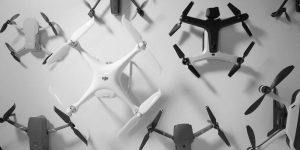


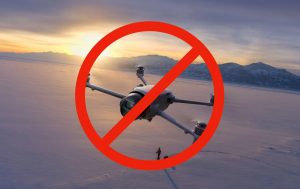
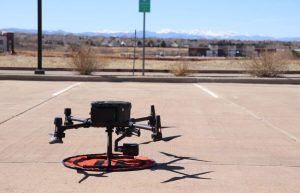

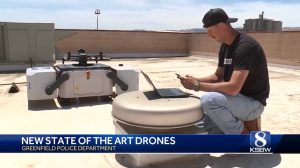
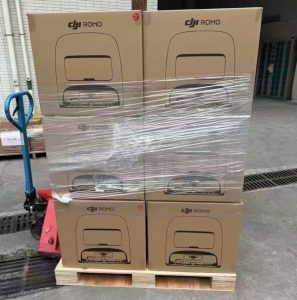
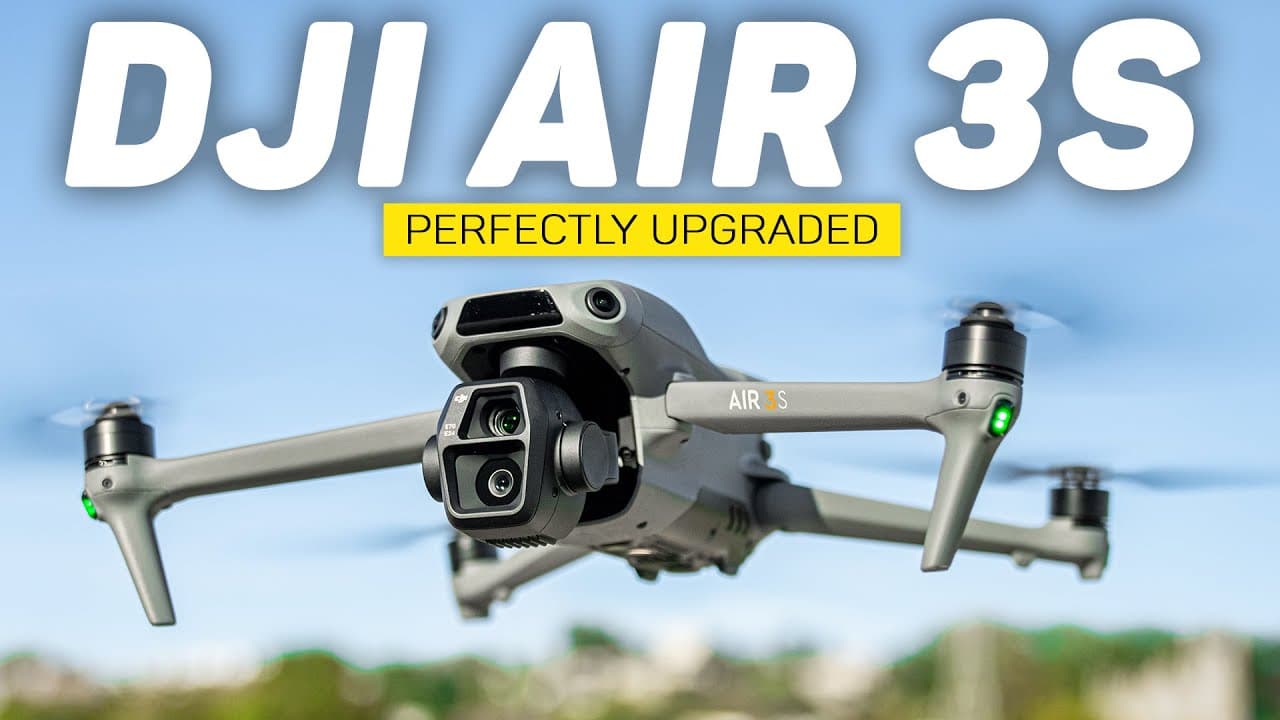

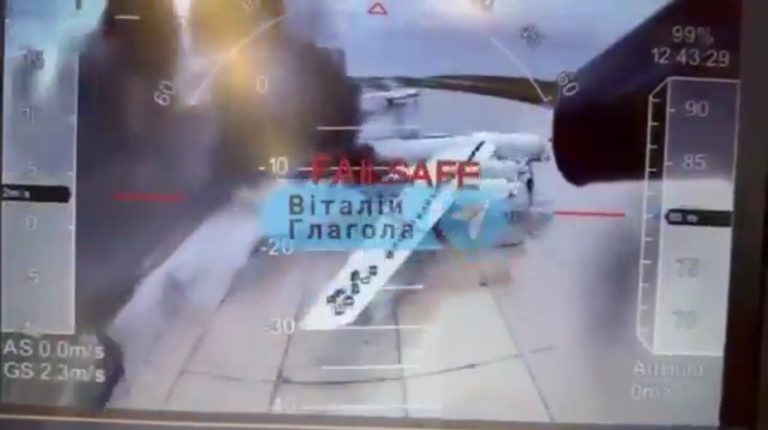
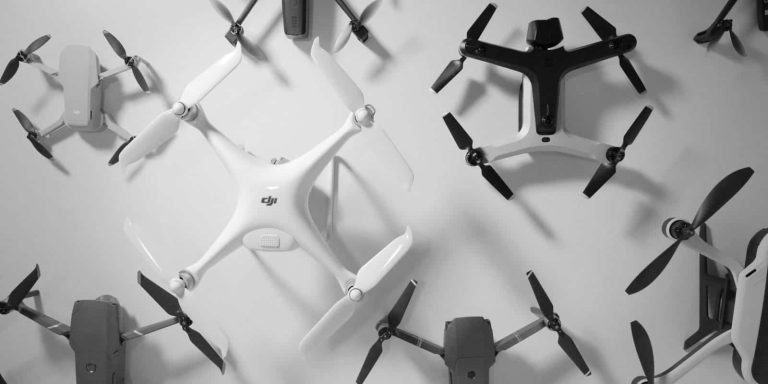


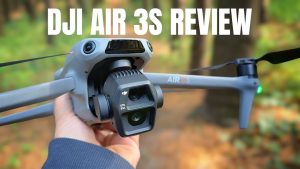

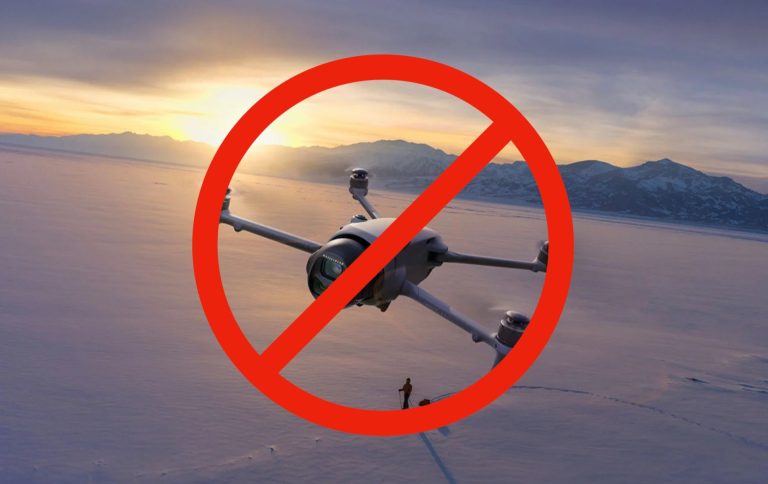
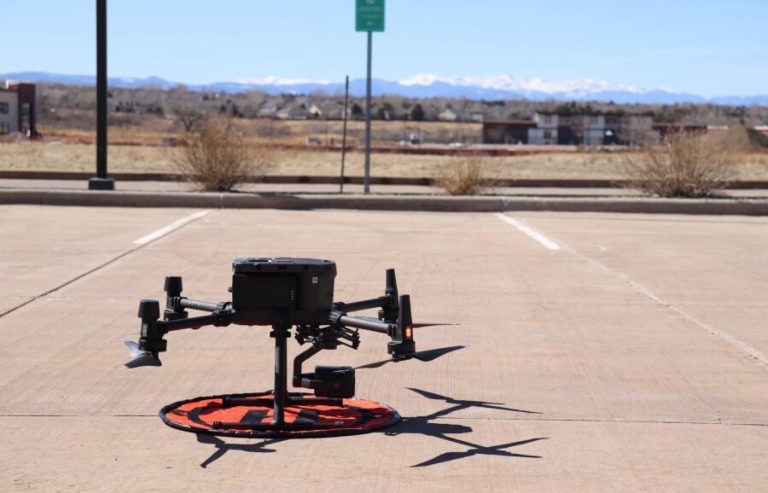
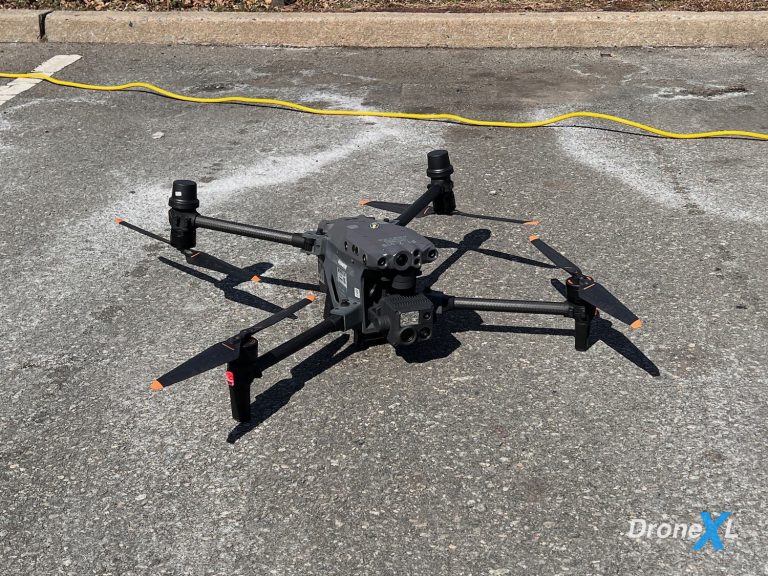

+ There are no comments
Add yours